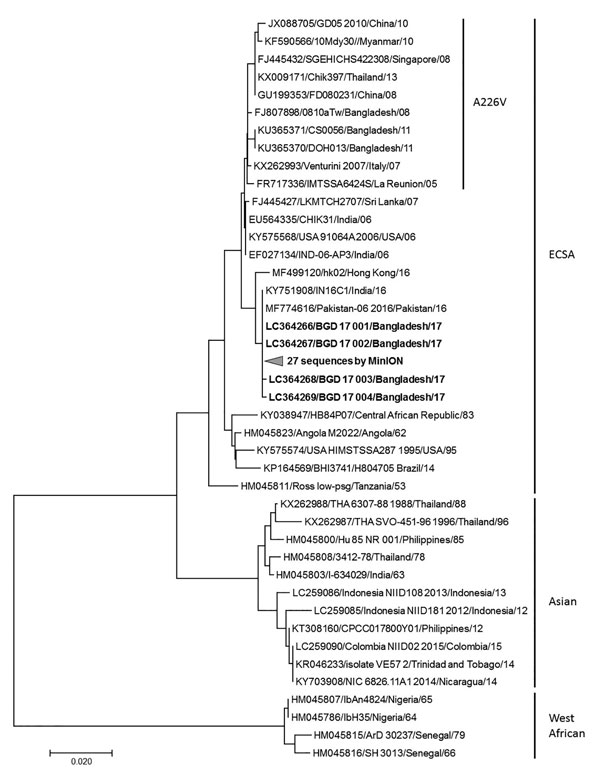Volume 25, Number 2—February 2019
Research Letter
East/Central/South African Genotype in a Chikungunya Outbreak, Dhaka, Bangladesh, 2017
Figure

Figure. Phylogenetic tree for partial chikungunya virus E1 gene nucleotide sequences with reference strains, Apollo Hospitals Dhaka, Dhaka, Bangladesh, June 29–October 31, 2017. Bold indicates sequences obtained in this study. Representative strains of each genotype are named by accession number, strain name, country of origin, and year of isolation. Scale bar indicates nucleotide substitutions per site.
Page created: January 18, 2019
Page updated: January 18, 2019
Page reviewed: January 18, 2019
The conclusions, findings, and opinions expressed by authors contributing to this journal do not necessarily reflect the official position of the U.S. Department of Health and Human Services, the Public Health Service, the Centers for Disease Control and Prevention, or the authors' affiliated institutions. Use of trade names is for identification only and does not imply endorsement by any of the groups named above.